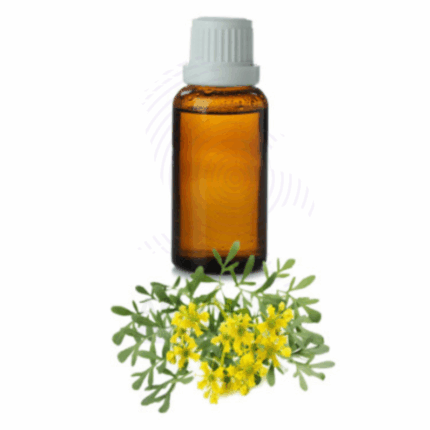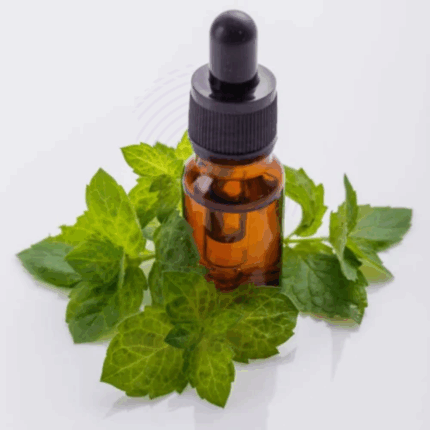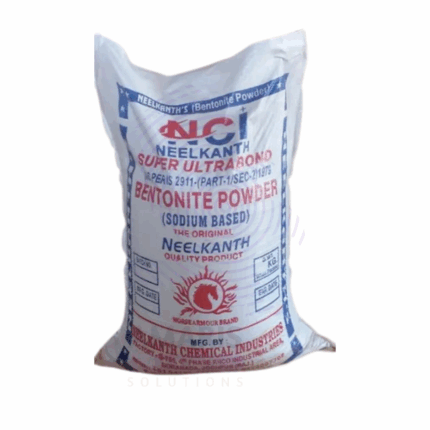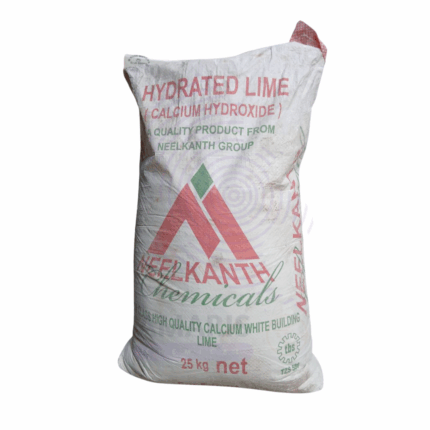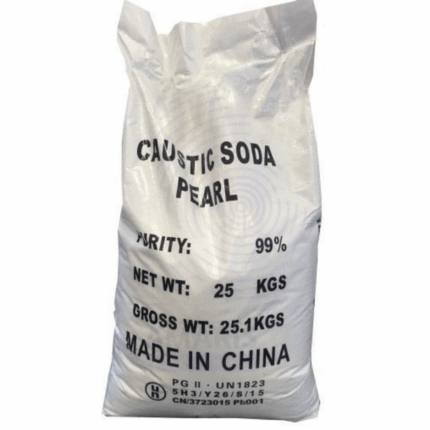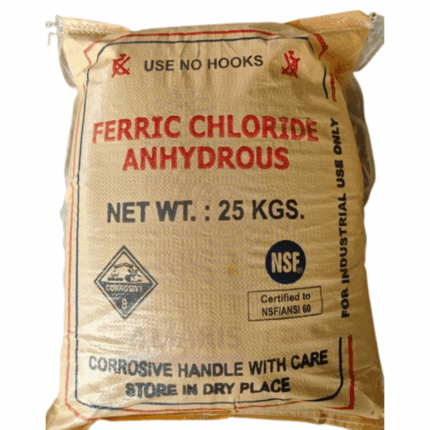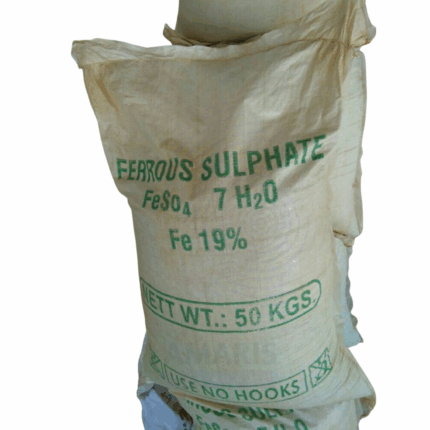Zinc Sulphate Heptahydrate
Zinc Sulphate Heptahydrate (ZnSO₄·7H₂O) is a white, crystalline, water-soluble compound commonly used as a dietary supplement to treat zinc deficiency. It serves as a key ingredient in fertilizers, animal feeds, and industrial applications like water treatment and dyeing. The heptahydrate form contains seven water molecules, making it highly soluble and effective for various agricultural, medical, and chemical uses.
Zinc Sulphate Heptahydrate
Primary Uses
Agriculture
- Micronutrient Fertilizer: Used to correct zinc deficiency in soils for crops like maize, wheat, rice, and citrus.
- Foliar Spray & Soil Application: Enhances chlorophyll production and enzyme activity in plants.
- Seed Treatment: Coated on seeds to promote healthy germination and early growth.
Animal Feed Industry
- Feed Additive: Provides essential zinc to livestock and poultry to support growth, immune response, skin integrity, and reproduction.
- Premixes & Supplements: Commonly added in formulations for pigs, cattle, poultry, and aquatic species.
Water Treatment
- Algae Control: Acts as an algaecide in industrial water systems and cooling towers.
- Coagulation Aid: Improves water clarification in wastewater treatment.
Chemical Manufacturing
- Intermediate: Used in the manufacture of zinc-based chemicals, catalysts, and pigments.
- Electrolyte Additive: Utilized in electroplating processes to produce uniform zinc coatings.
Secondary Uses
Pharmaceuticals (Industrial Grade – Non-Medical Use)
- Astringent & Antiseptic Base: Used in some topical preparations (only when refined to pharma grade).
Textile Industry
- Mordant in Dyeing: Enhances dye uptake and colorfastness in fabrics.
Paper Industry
- Slimicide: Prevents microbial growth during paper manufacturing.
Construction
- Additive in Cement & Concrete: Enhances setting characteristics and resistance to microbial growth (in niche applications).
Galvanizing
- Surface Preparation: Sometimes used in pre-treatment or surface activation before zinc electroplating.
Basic Identification Attributes
- Chemical Name (IUPAC): Zinc sulfate heptahydrate
- Common/Trade Name: Zinc Sulphate Heptahydrate 21%
- CAS Number: 7446-20-0
- HS Code: 2833.26.00
- Synonyms: White vitriol, zinc sulphate 7H₂O
Physical & Chemical Properties
- Physical State: Crystalline solid
- Color & Odor: White to colorless; odorless
- Molecular Formula: ZnSO₄·7H₂O
- Molecular Weight: 287.54 g/mol
- Zinc Content: ~21% (elemental zinc by weight)
- Solubility: Highly soluble in water
- Density: ~1.97 g/cm³
- Melting Point: 100 °C (decomposes with loss of water)
- pH (5% solution): ~4.5–5.5
Safety & Hazard Attributes
- GHS Classification:
- Irritant to eyes and skin
- Harmful if swallowed in large quantities
- Dangerous to aquatic environments in concentrated form
- Toxicity: Low at recommended levels; avoid inhalation or ingestion of dust
- Exposure Limits: General dust limits apply; not classified as a systemic toxin at industrial doses
Storage & Handling Attributes
- Storage Conditions: Store in a dry, well-ventilated area away from heat and moisture
- Container Type: 25 kg HDPE bags, kraft paper sacks with PE liner
- Shelf Life: Up to 2 years under sealed, dry conditions
- Handling Precautions: Avoid inhalation of dust; prevent moisture contact as it may cake or dissolve
Regulatory & Compliance Attributes
- Complies with REACH and TSCA chemical regulations
- Registered for fertilizer and feed use in many regions (including EU and U.S.)
- Manufactured under ISO 9001 and FAMI-QS (when feed-grade)
- Conforms to FAO/WHO standards for micronutrient fertilizers
- Meets CODEX guidelines for use in animal nutrition
- RoHS compliant (when applicable in coatings or electronics)
Environmental & Health Impact
- Biodegradability: Not applicable (inorganic compound)
- Ecotoxicity: Toxic to aquatic life at high concentrations; follow disposal regulations
- Bioaccumulation: Not expected
- Environmental Note: Follow guidelines to avoid runoff into natural water systems
Safety Handling Precautions
- PPE Required: Gloves, goggles, dust mask
- Handling Guidelines: Use with local exhaust ventilation; avoid dust buildup
- Storage Measures: Keep tightly sealed and protected from humidity
First Aid Measures
- Inhalation: Move to fresh air; seek medical attention if symptoms persist
- Skin Contact: Wash with soap and water
- Eye Contact: Rinse thoroughly with water for 15 minutes
- Ingestion: Rinse mouth; seek medical advice if large quantity is consumed
Firefighting Measures
- Fire Hazards: Not flammable
- Extinguishing Media: Use any media suitable for surrounding fire
- Hazardous Combustion Products: May emit sulfur oxides under extreme heat


 Preservatives(food)
Preservatives(food) Flavor Enhancers
Flavor Enhancers Acidulants
Acidulants Sweeteners
Sweeteners Antioxidants
Antioxidants Colorants(food)
Colorants(food) Nutraceutical Ingredients (food)
Nutraceutical Ingredients (food) Nutrient Supplements
Nutrient Supplements Emulsifiers
Emulsifiers
 Collectors
Collectors Dust Suppressants
Dust Suppressants Explosives and Blasting Agents
Explosives and Blasting Agents Flocculants and Coagulants
Flocculants and Coagulants Frothers
Frothers Leaching Agents
Leaching Agents pH Modifiers
pH Modifiers Precious Metal Extraction Agents
Precious Metal Extraction Agents
 Antioxidants(plastic)
Antioxidants(plastic) Colorants (Pigments, Dyes)
Colorants (Pigments, Dyes) Fillers and Reinforcements
Fillers and Reinforcements Flame Retardants
Flame Retardants Monomers
Monomers Plasticizers
Plasticizers Polymerization Initiators
Polymerization Initiators Stabilizers (UV, Heat)
Stabilizers (UV, Heat)
 Antifoaming Agents
Antifoaming Agents Chelating Agents
Chelating Agents Coagulants and Flocculants
Coagulants and Flocculants Corrosion Inhibitors
Corrosion Inhibitors Disinfectants and Biocides
Disinfectants and Biocides Oxidizing Agents
Oxidizing Agents pH Adjusters
pH Adjusters Scale Inhibitors( water)
Scale Inhibitors( water)
 Antioxidants(cosmetic)
Antioxidants(cosmetic) Emollients
Emollients Fragrances and Essential Oils
Fragrances and Essential Oils Humectants
Humectants Preservatives
Preservatives Surfactants(cosmetic)
Surfactants(cosmetic) Thickeners
Thickeners UV Filters
UV Filters
 Fertilizers
Fertilizers Soil Conditioners
Soil Conditioners Plant Growth Regulators
Plant Growth Regulators Animal Feed Additives
Animal Feed Additives Biostimulants
Biostimulants Pesticides (Herbicides, Insecticides, Fungicides)
Pesticides (Herbicides, Insecticides, Fungicides)
 Active Pharmaceutical Ingredients (APIs)
Active Pharmaceutical Ingredients (APIs) Excipients
Excipients Solvents(pharmaceutical)
Solvents(pharmaceutical) Antibiotics
Antibiotics Antiseptics and Disinfectants
Antiseptics and Disinfectants Vaccine Adjuvants
Vaccine Adjuvants Nutraceutical Ingredients (pharmaceutical)
Nutraceutical Ingredients (pharmaceutical) Analgesics & Antipyretics
Analgesics & Antipyretics
 Analytical Reagents
Analytical Reagents Solvents(lab)
Solvents(lab) Chromatography Chemicals
Chromatography Chemicals Spectroscopy Reagents
Spectroscopy Reagents microbiology-and-cell-culture-reagents
microbiology-and-cell-culture-reagents Molecular Biology Reagents
Molecular Biology Reagents Biochemical Reagents
Biochemical Reagents Inorganic and Organic Standards
Inorganic and Organic Standards Laboratory Safety Chemicals
Laboratory Safety Chemicals Specialty Laboratory Chemicals(Special Laboratory Equipment)
Specialty Laboratory Chemicals(Special Laboratory Equipment)
 Demulsifiers
Demulsifiers Hydraulic Fracturing Fluids
Hydraulic Fracturing Fluids Scale Inhibitors(oil)
Scale Inhibitors(oil) Surfactants(oil)
Surfactants(oil) Drilling Fluids
Drilling Fluids
 Dyes and Pigments
Dyes and Pigments Bleaching Agents
Bleaching Agents Softening Agents
Softening Agents Finishing Agents
Finishing Agents Antistatic Agents
Antistatic Agents
 Admixtures
Admixtures Waterproofing Agents
Waterproofing Agents Sealants and Adhesives
Sealants and Adhesives Curing Compounds
Curing Compounds Concrete Repair Chemicals
Concrete Repair Chemicals Anti-Corrosion Coatings
Anti-Corrosion Coatings
 Surfactants(cleaning)
Surfactants(cleaning) Builders
Builders Enzymes
Enzymes Solvents (Cleaning)
Solvents (Cleaning) Fragrances
Fragrances
 Electronic Chemicals
Electronic Chemicals Catalysts
Catalysts Lubricants
Lubricants Photographic Chemicals
Photographic Chemicals Refrigerants
Refrigerants Automotive chemicals
Automotive chemicals Pyrotechnic Chemicals
Pyrotechnic Chemicals
 Biodegradable Surfactants
Biodegradable Surfactants Bio-based Solvents
Bio-based Solvents Renewable Polymers
Renewable Polymers Carbon Capture Chemicals
Carbon Capture Chemicals Wastewater Treatment Chemicals
Wastewater Treatment Chemicals
 Pigments
Pigments Solvents(paint)
Solvents(paint) Specialty Coatings
Specialty Coatings Binders/Resins
Binders/Resins Additives
Additives Driers
Driers Anti-Corrosion Agents
Anti-Corrosion Agents Functional Coatings
Functional Coatings Application-Specific Coatings
Application-Specific Coatings
 Fresh Herbs
Fresh Herbs Ground Spices
Ground Spices Whole Spices
Whole Spices Spice Blends
Spice Blends Dried Herbs
Dried Herbs
 Leavening Agents
Leavening Agents Dough Conditioners
Dough Conditioners Flour Treatments
Flour Treatments Fat Replacers
Fat Replacers Decoratives
Decoratives Preservatives(baking)
Preservatives(baking)
 Plasticizers & Softeners
Plasticizers & Softeners Reinforcing Agents
Reinforcing Agents Adhesion Promoters
Adhesion Promoters Vulcanizing Agents
Vulcanizing Agents Antidegradants
Antidegradants Blowing Agents
Blowing Agents Fillers & Extenders
Fillers & Extenders Accelerators & Retarders
Accelerators & Retarders
